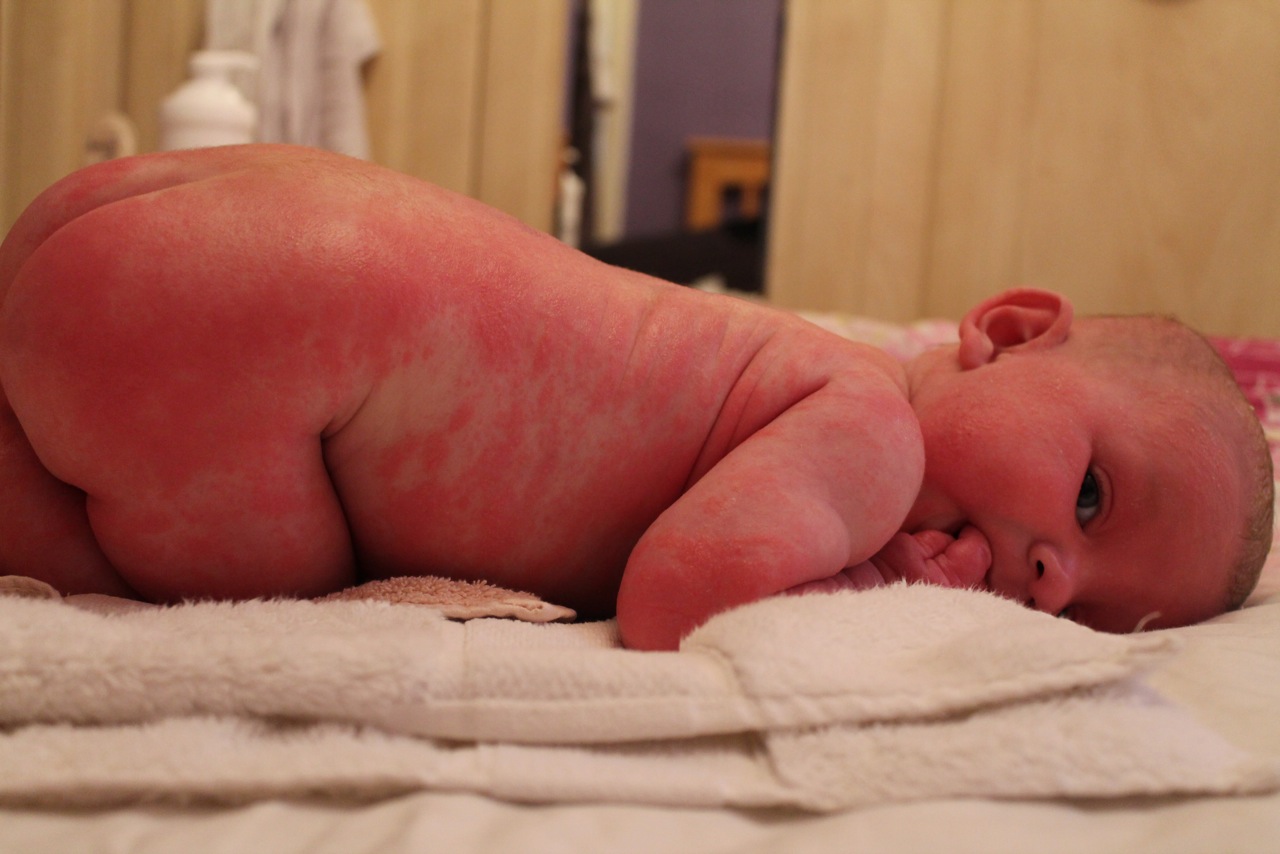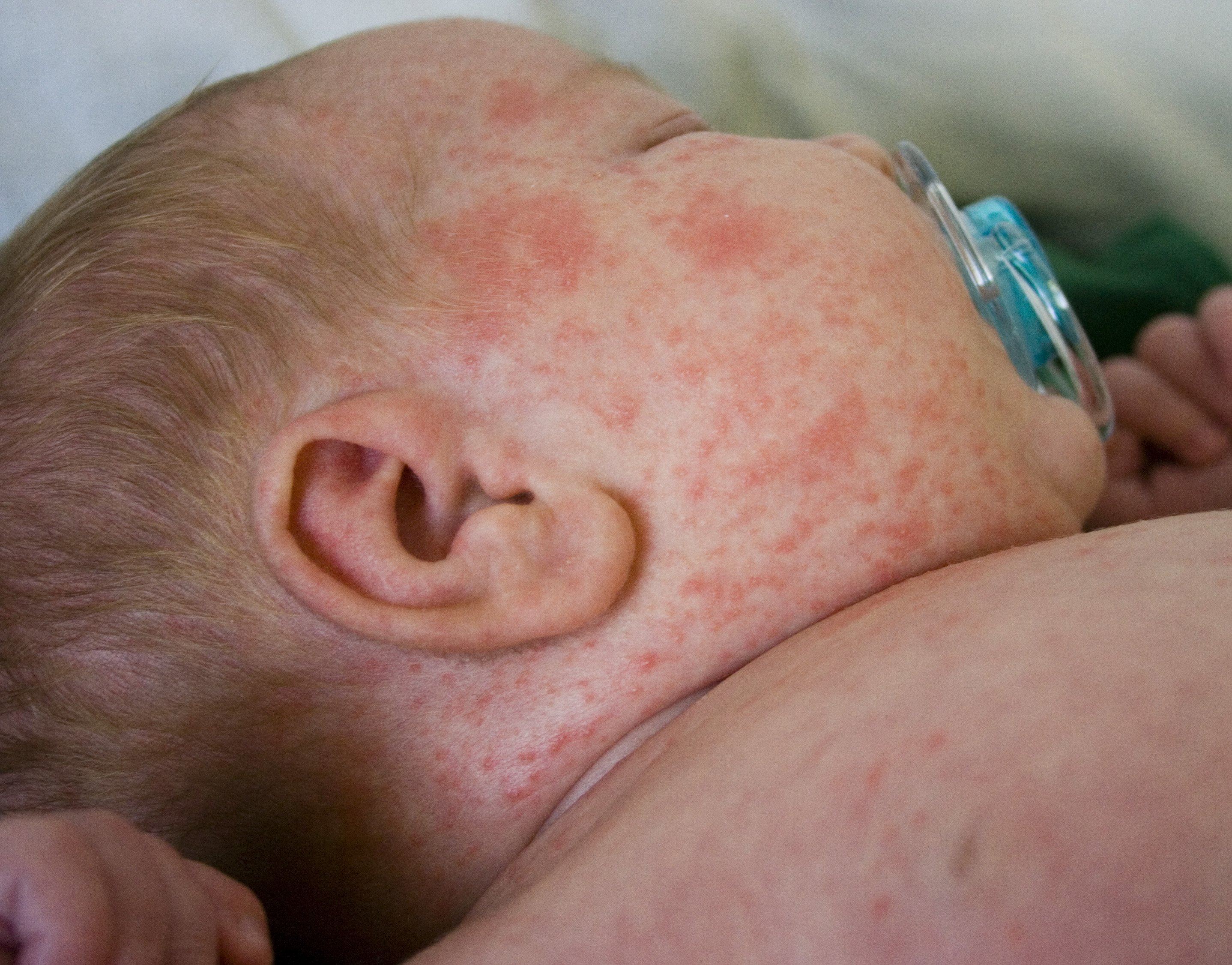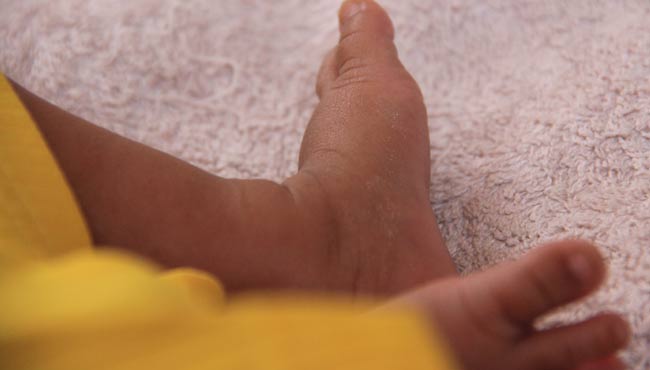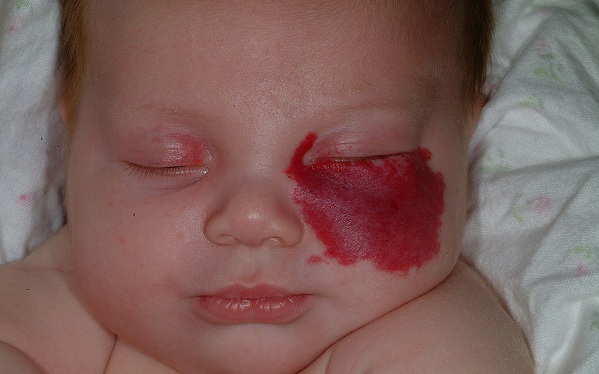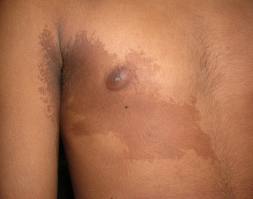A baby’s skin is very delicate and usually breaks out into a rash or some other skin conditions in the first year. The skin is an organ which acts as a protective barrier from harmful elements like sun, bacteria, viruses, etc. However, the epidermis does not act effectively up to a year from birth. The names of such conditions are sometimes very long, hard to say and even sound scary. However, most of these problems get resolved in a few days or weeks.
Common Baby Skin Conditions
1. Eczema
|
General description
|
Infant eczema is an itchy type of rash which is also referred to as atopic dermatitis. It usually starts on the face and spreads on the rest of the body. Symptoms also include fluid filled boils, which make the baby uncomfortable when they burst and ooze. It usually clears by the time the baby reaches 18 months of age and becomes less severe by 3 years of age. |
|
How to deal with it |
A gentle moisturizer will help, or the doctor might prescribe hydrocortisone ointment or antihistamines. |
2. Cradle Cap
|
General description |
This condition occurs due to hyper secretion from sebaceous glands and buildup of sebum on the scalp. It can spread to the neck, underarm and diaper area. It causes the skin to become crusty and greasy with red bumps and dandruff-like flakes to accumulate. The skin cells stick to the scalp and are not shed off. Cradle cap occurs mostly in new born and slightly older babies and clears up in few weeks or months. |
|
How to deal with it |
Mineral oil or petroleum jelly can be applied to the affected area and washed off with a shampoo. Special shampoo may be prescribed. |
3. Heat Rash
|
General description
|
Also known as Miliaria or prickly heat. In this condition, the back, neck, chest and underarms are usually affected, causing red bumps which may or may not be fluid filled. It can be caused due to intense heat or if sweat glands get blocked. This can cause lot of irritation and itching. |
|
How to deal with it |
Try to maintain a cooler room temperature. Remove constrictive clothing. Applying cool compress on affected region will provide relief. In case of fever, ibuprofen can be given after consulting doctor. It usually disappears within a few weeks’ time. Fluids beside breast milk and formula should not be given unless instructed by doctor. |
4. Dry Skin
|
General description
|
Similar to adults, babies also suffer from dry skin. It becomes flaky and tight. You can see dry patches, which can crack and also be painfully itchy. Since baby’s skin is very sensitive, it is more susceptible to such occurrences. |
|
How to deal with it |
Hydration is very important when dealing with dry skin. Avoid using soap and leaving the baby in bath tubs for long duration, as they can irritate the skin. It is a good idea to keep the room humidified. Apply hypoallergenic lotion generously all over the body. Special lotion, soap or shampoo maybe prescribed in case the rash increases. |
5. Newborn Acne
|
General description
|
Hormones from mother’s body present in the baby’s blood are responsible for causing acne in babies which present in the form of pimples and white-heads at the age of 2-3 weeks. Since the baby’s pores are not completely developed, they clog easily and pimples may usually appear on the nose and forehead. |
|
How to deal with it |
This acne disappears on its own in a few months. The area should be kept clean using only water. No creams meant for adults should be used for the baby. Do not squeeze or scratch the pimples. |
6. Diaper Rash
|
General description
|
A rash on the baby’s bottom caused due to wet diapers left on for extended periods which may lead to red bumps and soreness of the skin. If the diaper is too tight, air does not pass through and the presence of urine and stools in this situation increases the rash. |
|
How to deal with it |
Change the diaper frequently and use dry and clean diapers. Let the baby spend more time without diapers. Do not use baby wipes, as they might irritate the skin. Instead use washcloths or cotton balls. Change the soap or detergent used to wash the cloth diapers. |
7. Infantile Hemangiomas
|
General description
|
The most common birthmark which occurs when a group of blood vessels grow very rapidly in a certain area of the body. Infantile hemangiomas may not be present at birth or may only present themselves in the form of a reddish patch which later increases into a raised or elevated one. The time required for the patch to shrink will depend on its size. |
|
How to deal with it |
It usually disappears on its own; however, occurrence on the face or near the genitals may cause disfiguration and doctor should be consulted for various options available. |
8. Port-Wine Stain (Nevus Flammeus)
|
General description
|
Port-wine stain is a rare but usually permanent birthmark which affects only 3/1000 people. It happens when the nerve supply to the affected part is damaged and there is no control on the diameter of the vessel. The vessels continue to expand which causes blood to accumulate under the surface of the skin. It can be present anywhere on the body, but is more often seen on the face and limbs. |
|
How to deal with it |
Since it is permanent, doctors recommend getting this patch on the face removed with laser treatment while its size is small. |
9. Moles (Congenital Pigmented Nevi)
|
General description
|
The congenital pigmented nevi are not very common; the ‘acquired’ ones which occur during childhood and adolescence are seen more often. Possible to appear on any part of the body, the moles can be light brown to black in color and vary in size as well. |
|
How to deal with it |
The moles should be monitored for any changes as they have the risk of turning malignant. Taking photographs at frequent intervals will help to determine any changes. Doctor might suggest getting them removed surgically to avoid any future risks or complications of developing cancer. |
10. Café-au-Lait Spots
|
General description
|
These are irregularly shaped patches present anywhere on the body. They can be of beige to light brown in color. These spots can be present right from birth or may appear within few years of birth which can change in size and color over the years. |
|
How to deal with it |
These spots are generally harmless and do not cause any other ailments. However, if they increase in size or the number of these spots increases over six, it could the result of neurofibromatosis. Hence they should be checked regularly. Laser treatment can remove the spots. |
11. Other Baby Skin Conditions
- Mongolian Spots
- Stork Bites (Nevi simplex)
- Strawberry Hemangioma
- Frostbite
- Sunburn
- Impetigo
- Vascular malformations
- Melanocytic nevi
- Transient pustular melanosis
- Erythema toxicum
- Milia
- Desquamation
The following video tells some other baby skin conditions which you might be concerned about:

